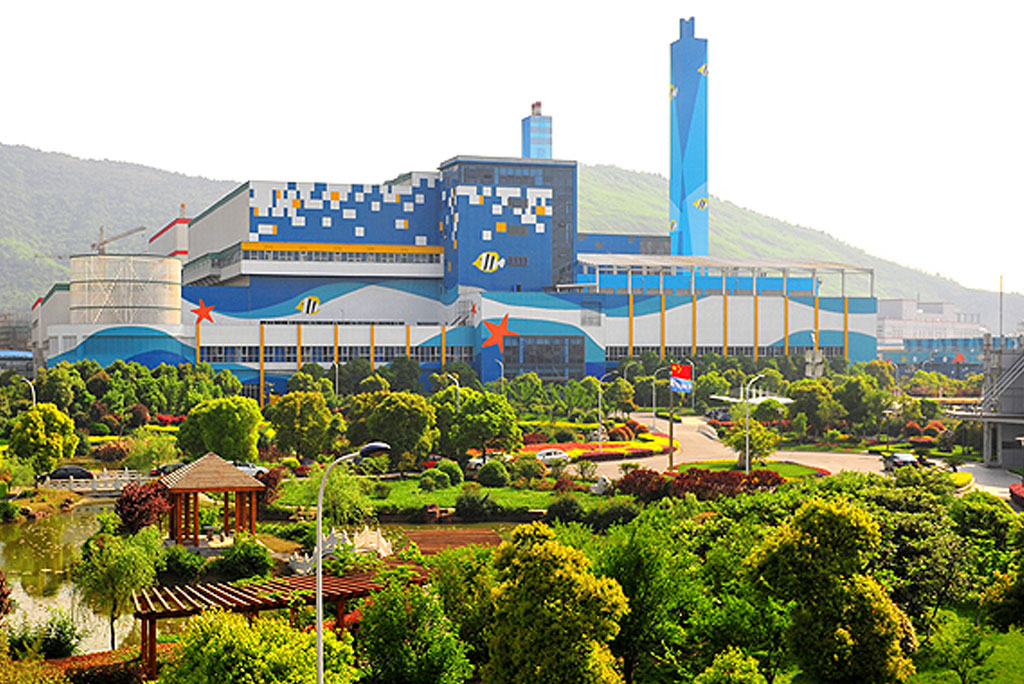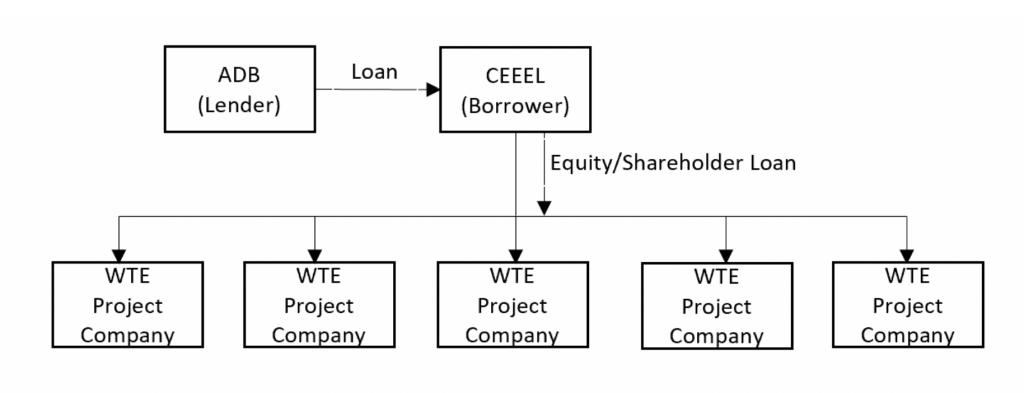East Asia Blog Series
Mobilizing Private Capital and Know-How to Turn Waste into Energy
Xiang Li 1 Mar 2020
Public-private partnerships can help make clean technologies for turning waste into energy accessible to cities.
Overview
Relevant and practical integrated waste management approaches are crucial for countering public health impacts of uncollected waste and environmental impacts of open dumping and burning. Medium to large cities in the People’s Republic of China (PRC) considers this as a pressing need to help them attain environmental sustainability and improve the quality of life of their citizens.
Turning municipal solid waste into energy through the waste-to-energy process is one of the popular strategies of solving the rise of generated waste. It involves incinerating waste to produce energy in the form of electricity or heat. Unfortunately, lack of access to finance and a gap in technological knowledge made it difficult for cities to adopt this strategy.
Project information
43901-014: China, People’s Republic of: Municipal Waste to Energy Project
Project snapshot
-
-
- Approval date: 4 June 2009
- Extended annual review report date: September 2015
- Amount of loan: $100 million
- Executing agency: China Everbright International Limited
- Financing: Asian Development Bank
-
Context
The People’s Republic of China is the world’s largest producer of municipal solid waste, generating about 215 million tons in 2017. This is expected to increase to 500 million tons per year by 2025 as urban population continues to rise.
The ineffective disposal of solid waste poses serious environmental and social challenges in the cities. It contaminates soil and groundwater when dumped in un-engineered landfills. Meanwhile, a number of emission control and leachate treatment facilities in engineered landfills also lack adequate clean technologies and operational know-how. These expose many urban poor, especially those living near landfills, to severe air and water pollution and the threat of infectious diseases.
Incineration is recognized as an effective method for waste treatment since it reduces waste volume by 90% and eliminates methane emissions. Waste-to-energy technologies recover energy from the incineration process to produce electricity and heat. By replacing fossil fuel combustion and avoiding methane, these technologies help avoid greenhouse gas emissions and mitigates climate change.
Development Challenges
The government of the People’s Republic of China enacted laws and regulations between 2004 to 2007 to promote waste management and control environmental pollution and city-level public-private partnership (PPP) based on concession agreement.
Despite the recent policy shift in favor of waste-to-energy and the increased interest of municipal governments in clean technologies, market barriers still limit the expansion of waste-to-energy projects with clean technologies in the country.
One of the key bottlenecks is the lack of access to finance due to the following:
- There are gaps in clean technology knowledge and misperceptions of actual technology risks.
- Clean technologies require higher initial capital expenditure, making the total investment requirement higher, while commercial banks are often unfamiliar with environment and health benefits that are difficult to quantify.
- The due diligence costs associated with waste-to-energy projects with clean technologies are high because of the need for technical evaluation regardless of the project size.
- Under PPP arrangements, municipal governments often require private sector partners to fund project equity in hard currency. However, the availability of long-term loans to finance project equity, in US dollar, in particular, is limited.
Solution
To reduce the environmental impact of unhygienic waste disposal, ADB in 2009 approved a $100 million long term loan to support, through PPP, the construction and operation of waste-to-energy projects in the People’s Republic of China. The project aimed to:
- build, own and operate waste-to-energy plants with clean technologies;
- treat 8,000 tons of municipal solid waste daily to benefit an urban population of 16 million; and
- generate 800 gigawatt-hours of electricity by 2013.
China Everbright International Limited served as the project sponsor while China Everbright Environmental Energy Limited (CEEEL)—in charge of building, operating, and maintaining waste-to-energy plants based on the concession agreements with the municipal governments —was the borrower.
The project featured an efficient private sector participation model in waste-to-energy projects through PPP for multiple projects in medium-sized municipalities. Located in different cities, these multiple waste-to-energy projects are often too small for banks to finance on a standalone basis. ADB structured a facility to support portfolio subprojects efficiently using a portfolio approach. Under this approach, the ADB loan was provided to a holding company and channeled to the waste-to-energy project companies.

This model encouraged the private sector to invest in waste-to-energy projects with clean technologies. It mobilized available domestic funds, creating better awareness among commercial banks and willingness to finance more waste-to-energy efforts.
A $653,000 technical assistance grant funded by the Clean Energy Fund was also used to support the reporting and environmental management of the waste-to-energy facilities.
Results
The project benefited approximately 18 million city dwellers, 12.5% more than the target. It helped create better living standards in the cities of Jinan, Suzhou, Zhenjiang, Pizhou, and Sanya. By reducing the amount of untreated waste delivered to landfills, the waste-to-energy plants reduced pollutants and improved air quality in the said cities.
Likewise, the project diversified energy sources and reduced greenhouse gas emissions in the People’s Republic of China. In 2014, the project generated 956 gigawatt-hours (GWh) of green electricity and reduced 1.2 million tons of carbon dioxide emissions by eliminating methane and replacing fossil fuels. Since 2011, the project has generated 3,642 GWh of electricity and reduced 4.7 million tons of carbon dioxide emissions.
Waste-to-energy plants received local awards and served as demonstration models for efficient municipal solid waste management. For example, the Jinan plant received the Luban Award–the nation’s highest honor for project quality in 2012–2013, while the Zhenjiang plant received the highest score in the Jiangsu Provincial Assessment.
Moreover, the project has encouraged other cities in the People’s Republic of China to replicate the business model. As of 2014, several local governments such as Fujian, Qinghai, Anhui, Hunan, and Sichuan have been piloting or implementing PPP projects. China Everbright International Limited has set market standards and benchmarks and helped the government plan enabling laws at both the national and municipal levels.
Lessons
The project highlighted the importance of ensuring a robust project design, partnering with the right sponsor, providing technical assistance for capacity building to upgrade operations and skills, and facilitating the transfer of knowledge and technology.
Choosing the right project sponsor is key to ensuring smooth and successful implementation. China Everbright International Limited is a leading environmental protection company in the People’s Republic of China focusing on waste-to-energy, wastewater management, and renewable energy businesses.
The technical assistance that was implemented together with the loan helped China Everbright International Limited upgrade its operations and management process, and establish new municipal solid waste management and waste-to-energy standards. Many subsequent private sector projects have replicated this dual-assistance arrangement and applied the knowledge and technology improvements learned from this project.
In 2012, ADB signed another loan with China Everbright International Limited to reduce the environmental impact of agricultural waste through municipal-level PPP projects in Viet Nam.
In 2017, ADB approved a USD$100 million facility which will support the construction and operation of a series of waste-to-energy plants with advanced clean technologies, including flue gas emission control to meet European Union standards, in multiple municipalities in Viet Nam.
References
ADB. 2015. Extended Annual Review Report: Municipal Waste to Energy Project in the People’s Republic of China. Manila.
ADB. 2017. Report and Recommendation of the President to the Board of Directors: Proposed Loan China Everbright International Limited Municipal Waste-to-Energy Project in Viet Nam. Manila.
ADB. 2017. Integrated Solid Waste Management for Local Governments: A Practical Guide. Manila.
Author

Xiang Li
Senior Project Officer, Infrastructure Finance Division 2, Private Sector Operations Department, Asian Development Bank
This blog is reproduced from Development Asia.


